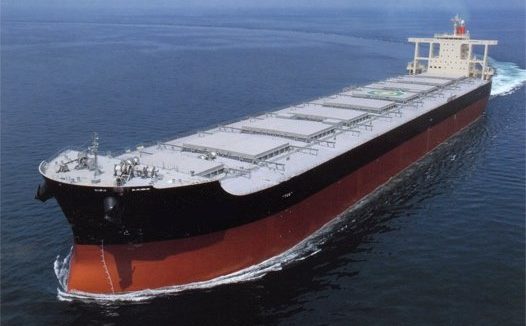China reveals largest ever drop in monthly steel output as struggling property developers roil markets

Amid the bullish pronouncements for the cape sector, one alarming statistic has given owners pause for thought. Beijing revealed this week that Chinese steel output dropped by more than 12% in August to 83.2m tonnes, the greatest year-on-year slump since the global financial crisis, according to data from brokers Braemar ACM. In absolute terms, August’s year-on-year steel output drop of 11.6m tonnes marked the greatest ever.
“Over the first half of the year, authorities failed to meet targets of flat output levels relative to 2020, but over the last couple of months capacity cuts have been far more aggressive than we expected,” Braemar ACM stated in an update to clients yesterday, noting too how iron ore prices have slumped recently to lows not seen since last October.
China’s restrictive policy on commodities and especially on the steel market was discussed in a recent dry bulk update from BIMCO.
Contagion in the property sector could cause a Chinese banking crisis
“After strong growth in the first half of the year, the Chinese government seems keen to clamp down on the steel and other heavy industries in order to limit emissions. One big question is how strictly these measures will be enforced and whether they will start to constrain economic growth,” the BIMCO report noted.
The two largest dry bulk goods imported by China in terms of volume, iron ore and coal, have both fallen year-on-year during the first seven months of the year.
Other August pointers that ought to raise concern for cape owners were highlighted by Braemar ACM yesterday.
“Economic markers such as industrial output, infrastructure investment, retail sales and floor space under construction also registered the slowest levels of growth since the pandemic hit China in early 2020. All of these have also raised question marks over China’s long-term dry bulk demand prospects,” Braemar ACM analysts pointed out.
Arguably the biggest concern is the enormous debts being uncovered among China’s leading property developers.
Alarm bells rang this week, with the news that the world’s most indebted real estate developer, Shenzhen-headquartered Evergrande, is struggling to make loan payments on its more than $300bn in liabilities—a sum roughly equivalent to the public debt of Portugal.
While Evergrande has been making the most headlines, there are a host of other big Chinese property developers who have revealed massive debts this year. Combined, these companies – each in default or significant stress – represent over half a trillion dollars of total liabilities, leading some economists to warn that contagion in the property sector could cause a Chinese banking crisis.
“[I]nstability in the property markets presents a significant risk for the longer term,” Braemar ACM warned yesterday.

So Australia is heading for a recession.